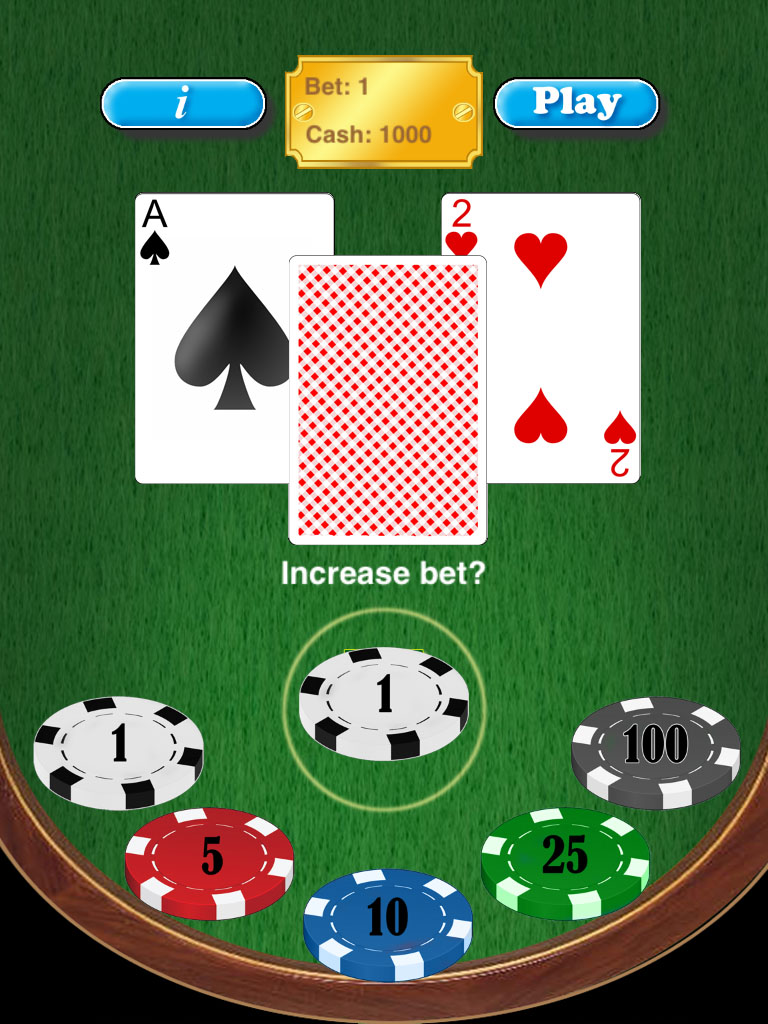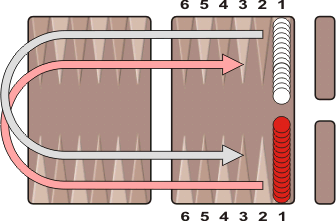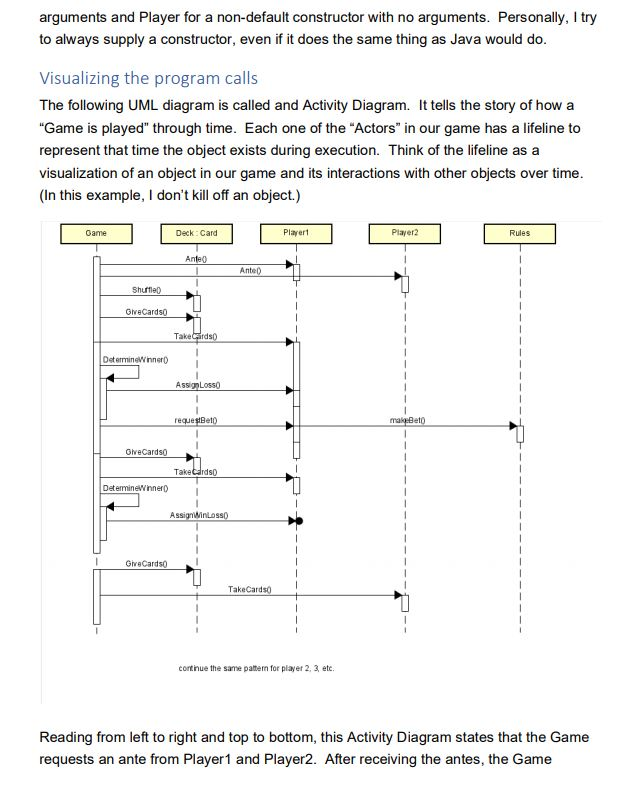How To Play Acey Deucey
Acey Deucey, also known as Yablon,[1]In-Between, Sheets, Between the Sheets or Maverick, is a simple card game that involves betting.
A round of Acey Deucey. Dealt two cards, the player bets on whether the value of the third card will fall between the value of the first two. Acey Deucey, also known as Yablon, 1 In-Between, Sheets, Between the Sheets or Maverick, is a simple card game that involves betting. The liberal rules of Spanish 21, though, do compensate for this. With optimal play, the house edge of a Spanish 21 table is lower than that of a blackjack table with the same rules on hitting or standing on soft 17. The game also offers an optional 'Match the Dealer' side bet, which compares a player's cards with the dealer's upcard.
Rules[edit]
Before the action, each player must add their ante into the pot. Two cards are then dealt face-up to one player. That player then bets from nothing to the amount that is in the pot at the time whether or not the third card will numerically fall in between the first two. If the third card falls in between the two other cards, the bettor takes the amount he bet out of the pot; if the third card falls outside of the two other cards, the bettor must add what he bet to the pot; and if the third card matches the numerical value of one of the other two cards, the bettor must add to the pot double what they bet. If two cards of the same value come up, e.g. 2,2 the bettor picks if the next card will be higher or lower and bets. If the next card is the same as the last two, i.e. a 2, the bettor must triple their bet.
Regionally specific rules[edit]
The rules and specifics of the game often vary from region to region. For example in Liaoning province, northeast China the minimum number of players is 4 and each player is required to ante before the first card is turned. Two cards are then dealt face-up to one player. That player then bets from nothing to the amount that is in the pot at the time (during the first time around the table players are only allowed to bet up to half of the pot) whether or not the third card will numerically fall in between the first two. Other regions, such as in the United States, play the game by combining two decks of cards. This adds another dynamic to the game due to the extra number of similar type cards. Beyond that, most of the other rules followed by United States players are similar to those which are observed in the Liaoning province.
Just about all regions play if the third card falls in between the two other cards, the bettor takes the amount he bet out of the pot; if the third card falls outside of the two other cards, the bettor must add what he bet to the pot; and if the third card matches the numerical value of one of the other two cards, this is referred to as a 'Post' and the bettor must add to the pot double his initial bet. If two cards of the same value come up, e.g. 2,2 the bettor picks if the next card will be higher or lower and bets. If the next card is the same as the last two, i.e. a 2, this is considered a 'Post' and the player is required to pay triple the bet for the hand.
Aces[edit]
In addition to this, there is a special rule for Aces. If the first card turned is an Ace the player may choose its value as either the high Ace or the low one. Low Ace is always lower than any other card, including the deuce. If an Ace comes up as the second card turned it is always considered the high Ace. If a player 'Posts' on an Ace they are required to pay four times their bet for that hand. Aces also cause an automatic loss if it is the third card turned when the first two cards are a match, e.g. 6,6. The best spread in the game is considered to be a low Ace on the left and a high Ace on the right. This is also one of the worst hands to get as you run the risk of the third card being an Ace and having to pay four times your bet for the hand.
Variations[edit]
A variation is to split the cards if two end cards are the same value. This requires the bettor to ante in for two hands and the dealer would draw one more card under each of the end cards. After this, the same rules apply.
Some new rules that increase payouts and betting:
- Blind Pot - Bet the pot before your 2 outside cards are placed. In the case of a win, you win the pot. If you are outside of your cards you lose half the pot. If you post you have to pay the full amount of the pot.
- 'AutoPot' - Any A-2 played as your outside cards automatically make the player bet the full amount of the pot.
- Post Bet - You can bet that your inside card will match one of your outside cards. In the case of this you win the full pot and in addition each player pays an equal percentage to match the pot. Therefore, the player that post would win 2x the pot. If the player bets the post and misses he owes half the amount of the pot to the pot.
- Satan 6s - Any player that gets 6-6-6 as their cards must pay 6x the amount of the pot to the pot.
In popular culture[edit]
The game show Card Sharks is based on Acey Deucey and closely resembles the rules.[citation needed] In the show, two players answer high-low survey questions, and guess whether the next card is higher or lower (with duplicates counting as wrong).
Acey-ducey is often mentioned in the book series The Corps by W.E.B. Griffin which is set in the Pacific Theater of World War II, and follows the lives of a group of marines in special service. Griffin never explains the game in the slightest, but his characters are often playing it when they are interrupted by the war, i.e. required to stop playing to perform some duty.
In 1978 a type-in programBASICvideo game version was distributed via the book BASIC Computer Games.[2]
An unsold 1985 game show pilot hosted by Jim McKrell, entitled Split Decision, had contestants playing the game Acey Deucey while answering general knowledge questions. Each player picked a card to share and had their own base card, and tried to fit a card in or bust the other player.
The game is also frequently mentioned on Barstool Sports' Spittin’ Chiclets podcast, hosted Ryan Whitney, Rear Admiral, and Paul Bissonnette. According to Whitney and Bissonnette, both former NHL players, the game is regularly played on team flights and bus rides.

See also[edit]
References[edit]
- ^'Rules of Card Games: Yablon'. www.pagat.com.
- ^Acey Ducy in BASIC Computer Games, 1978
External links[edit]
- Acey Ducy in BASIC Computer Games, 1978
- Acey Deucey for Arduino code & video
Spanish 21 is a blackjack variant owned by Masque Publishing Inc., a gaming publishing company based in Colorado. Unlicensed, but equivalent, versions may be called Spanish blackjack. In Australia and Malaysia, an unlicensed version of the game, with no dealer hole card and significant rule differences, is played in casinos under the name 'Pontoon'. It was first introduced about 1995.[1]
Rules[edit]
Spanish 21 is played on a blackjack table with a custom layout and uses the following rules:
- The game is played with six or eight decks dealt from a shoe, or from a continuous shuffling machine (CSM). Spanish 21 is played with 48-card Spanish decks, although standard French suited 52-card decks are used with the 4 ten-spot cards removed. All cards have the same values as in blackjack.
- The dealer gets a hole card.
- Like traditional blackjack, the dealer hits on 16 and stands on 17. In some venues, the dealer hits on a soft 17 (abbreviated as H17), though most venues have the dealer stand on soft 17 (S17). Hitting soft 17 (H17) negatively impacts the player; that rule increased the house edge by 0.40%.
- Blackjack (a natural total of 21 on the first two cards) always wins, and is always paid 3:2 regardless of whether or not the dealer has a blackjack.
- Insurance is paid 2:1, just like in blackjack, despite the fact that there are four fewer ten-valued cards per deck. As 3 cards in 12 are worth ten, the chance of the dealer getting a blackjack when showing an Ace is only 25%. Therefore, for insurance to be an even bet, it would have to pay 3:1, not 2:1. The house edge on the insurance is 24.7%, one of the worst of any wager in a casino.
- Hitting, standing, and splitting all follow similar rules to blackjack. Doubling after splitting (DAS) is always permitted, and, in most venues, players are allowed to draw as many cards as they wish after splitting aces, or may double down after receiving second or subsequent cards.
- Players can split to a maximum of four hands, even on aces.
- In most venues, if the dealer does not have blackjack, players may surrender, and get half their bet back in exchange for relinquishing the right to play on. This type of surrender is known as a 'late surrender' (LS).
- Players can surrender after doubling (sometimes called forfeit, double-down rescue, or concede). The dealer takes the original bet, and the player retains the double portion of the bet. This is because the player is allowed to double down for less than the original bet.
- Once the initial two-card hands are dealt, if the dealer is showing an Ace or face card, he peeks underneath the hole card to check for a blackjack, before playing actually commences. If he has blackjack, all players automatically lose, unless they also have a blackjack (which, as mentioned above, automatically win 3:2).
- The player may double down on any total and on any number of cards.
- In some casinos, players may double double down, or redouble up to two times after doubling down. For example: The player bets one unit and is dealt 2-3, giving a hand total of 5; the dealer is showing a 6. The player doubles the first time and draws a 3. The hand total is now 8 and the total amount wagered is two units. The player doubles a second time and draws a 3. The hand total is now 11 and the total amount wagered is four units. When the player doubles a third time on 11, the total amount wagered will be eight units. Redoubling is a profoundly player-advantageous rule, when optimally executed.
- A total of 21 always wins for the player. It never pushes against the dealer's 21.
- A five-card 21 pays 3:2, a six-card 21 pays 2:1, and a 21 with seven or more cards pays 3:1. A 21 composed of 6-7-8 or 7-7-7 of mixed suits pays 3:2, of the same suit pays 2:1, and of spades pays 3:1. These bonus payouts apply even if the hand was the result of a split. However, doubling down negates these bonuses.
- A 'super bonus' of $1000 for bets under $25, and $5000 for bets of $25 and over, is paid on a suited 7-7-7 against any dealer 7. All other players at the table receive a $50 'envy bonus'. Splitting or doubling down negates the 'super bonus'.
The removal of the four tens in each deck gives roughly a 2% advantage to the dealer. The liberal rules of Spanish 21, though, do compensate for this. With optimal play, the house edge of a Spanish 21 table is lower than that of a blackjack table with the same rules on hitting or standing on soft 17.
How Do You Play Acey-deucey

The game also offers an optional 'Match the Dealer' side bet, which compares a player's cards with the dealer's upcard. Matching the rank of the dealer's card pays 4:1 on a six-deck game, and 3:1 on an eight-deck game, while a 'perfect match' of rank and suit pays 9:1 on six decks and 12:1 on eight decks. A player may win on both cards; (e.g. if a player has 8s 8c and the dealer has 8c as an upcard, the player will receive 3:1 on the rank match and 12:1 on the perfect match, paying out a total of 15:1.) While this side bet has a house edge of approximately 3%, significantly higher than the edge of the main game, it is one of the lowest house edges of any blackjack side bet.
How To Play Acey Deucey Cards
House edge[edit]
The following tables list the Spanish 21 house edges for all rule sets found in North America.[2] (The figures were obtained from 10-billion hand simulations and have a standard error of 0.001%. The super bonus is averaged out to a 100:1 payout.) These charts assume that the player is using basic strategy. 'H17' means that the dealer hits soft seventeen, 'S17' means that the dealer stands on soft seventeen.
| Rules | Decks | House Edge |
|---|---|---|
| H17 | 6 | 0.78% |
| 8 | 0.80% | |
| S17 | 6 | 0.37% |
| 8 | 0.38% | |
| H17 with redoubling | 6 | 0.42% |
| 8 | 0.45% |
| Rule Changes | Change in House Edge |
|---|---|
| No surrender (H17) | 0.018% |
| No surrender (S17) | 0.006% |
| No draws on split Aces (H17 or S17) | 0.28% |
| No draws on split Aces (H17 with redoubling) | 0.29% |
| Natural after split pays 3:2 | –0.16% |
Match the Dealer[edit]
Match the Dealer is a side bet offered on most Spanish 21 games. The player wins the side bet if the rank of either or both of their initial two cards matches the rank of the dealer's up card. If the cards match in both rank and suit, the player wins a bigger payout. Some casinos offer a second Match the Dealer bet which wins when either or both of the player's initial two cards match the dealer's hole card. The payouts and the house edge vary depending on the number of decks in play as shown below.

| Number of Decks | Non-Suited Match | Double Non-Suited Match | Suited Match | Suited + Non-Suited Match | Double Suited Match | House Edge |
|---|---|---|---|---|---|---|
| 2 | 4:1 | 8:1 | 15:1 | 19:1 | NA | 3.63% |
| 4 | 4:1 | 8:1 | 10:1 | 14:1 | 20:1 | 3.20% |
| 5 | 3:1 | 6:1 | 13:1 | 16:1 | 26:1 | 3.53% |
| 6 | 4:1 | 8:1 | 9:1 | 13:1 | 18:1 | 3.06% |
| 8 | 3:1 | 6:1 | 12:1 | 15:1 | 24:1 | 2.99% |
References[edit]
- ^Dalton, Michael. 'S ... is for Shuffle - Blackjack Review Network'. Blackjack Review Network.
- ^Reproduced from The Pro's Guide to Spanish 21 and Australian Pontoon (Lulu Publishing, 2008), with permission from the author, Katarina Walker



